They were hanged and according to the savage English custom of the time, their heads were cut off and impaled on the big iron gates of the old Market House.1
Michael O’Donohoe’s father, Matt, was a Garda stationed in Castleisland. He was photographed in the town in 1956 escorting Eamon de Valera during the election campaign.2
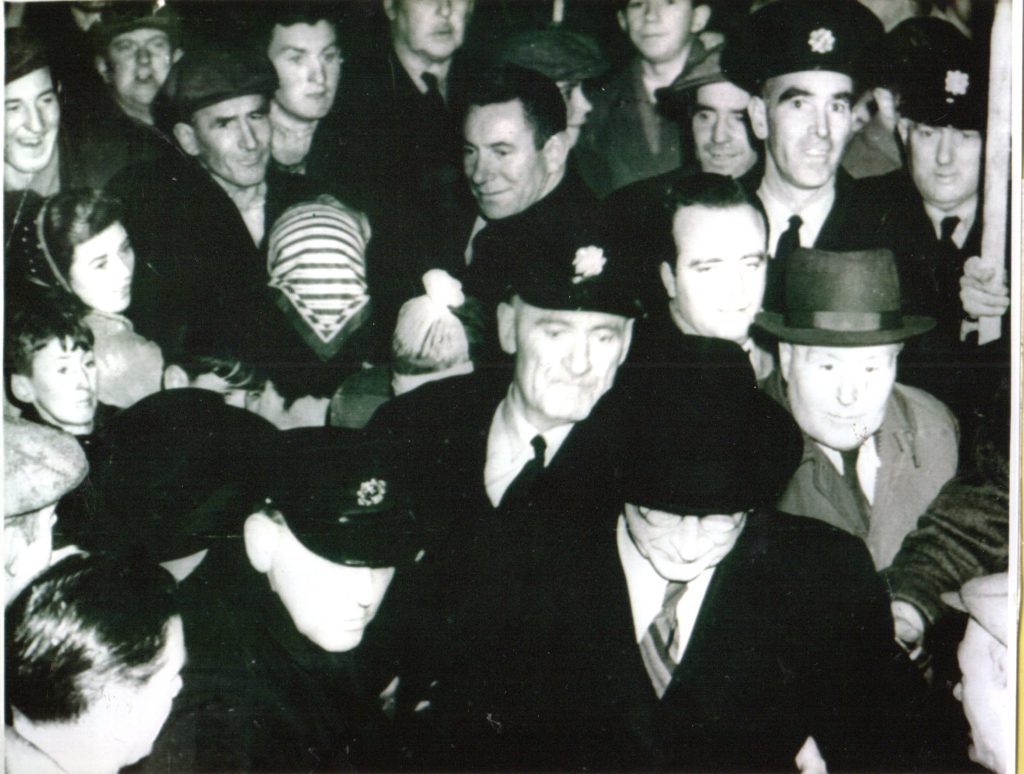
It may have been this family background that caused Michael O’Donohoe to develop an interest in the history of law enforcement in the Castleisland district.
The collection material includes an overview of the military history in Castleisland in the eighteenth and early nineteenth centuries.3
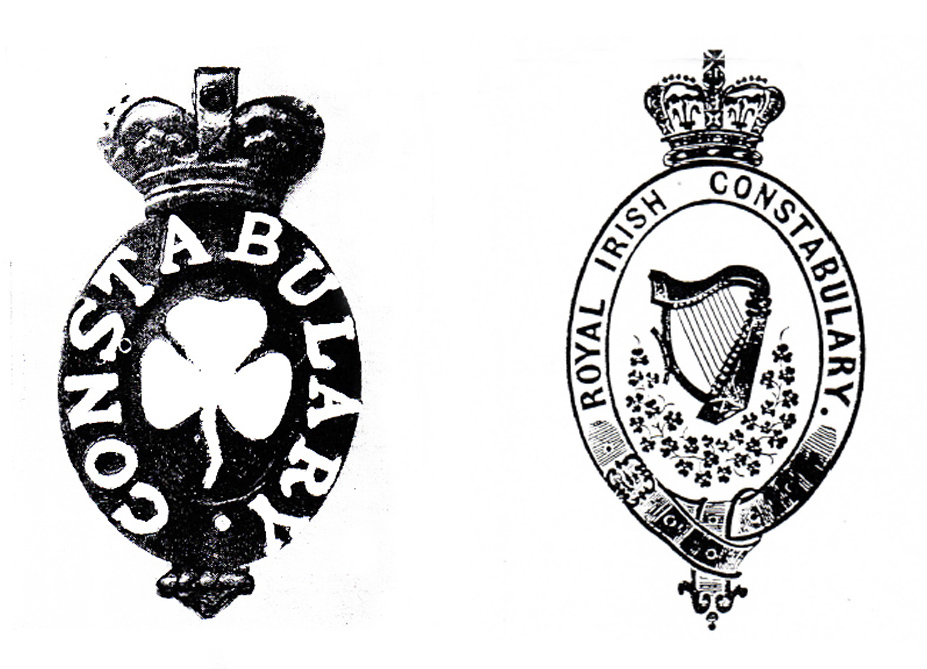
Rebellion of 1798
The murder of three yeomen at Castleisland yeomanry barracks in 1798 hardly escaped Michael’s attention. William Harold, Michael Boyle and Richard Boyle of the Mount Eagle Cavalry died on the night of 13 August:
.
They were mangled and butchered to that pitch that it was impossible to know them. They belonged to Captain Meredith’s corps of yeomen and were all Protestants. They had no arms, except one sword between the three.4

Arrests and executions
Arrests soon followed:
There was a man of the name of Nowlan from Nuckneen taken in the street of Castle Island the day following; another fellow from the same neighbourhood was taken at Raus yesterday, named Flaherty, a school master … Nowlan had informed against sixty of his accomplices and that he says there were one hundred in all.5
Castleisland historian, T M Donovan, described how his grandfather, John Donovan was among those arrested.6
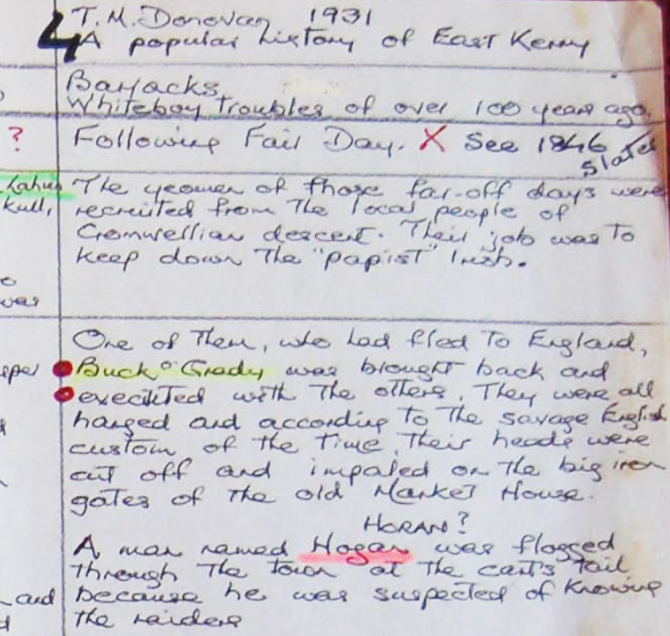
‘Grady’ was identified as the alleged leader:
The Albion has expressed great pity for the miscreant named Grady who was apprehended in London on a charge of having committed most atrocious murders in the county Kerry but who put a period to his own existence rather than face justice to answer for his enormities … It is said he had been a kind of a school-master in the country.7
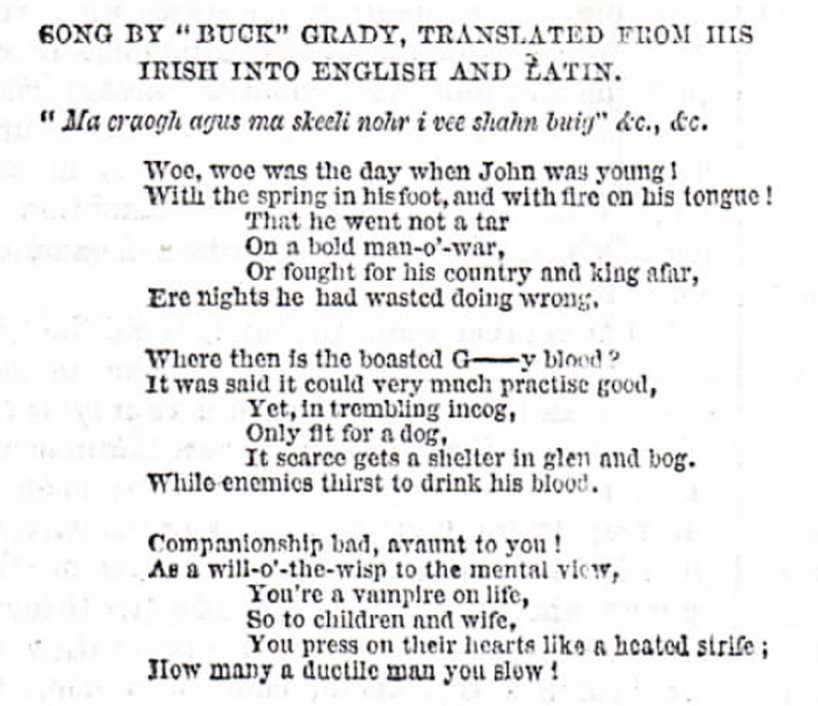
A man named Michael Brosna was among those convicted of the murders and in 1801, was ‘taken from the Prevot prison Limerick on board the Duff gun-boat, Lieut Wing, to Tarbert from whence he is to be transmitted to Castle Island there to be executed pursuant to sentence’.8
Castleisland affair a direct link with the Rebellion
A nineteenth century fictional account of the affair written by ‘the son of a looker on’ identified it directly with the Rebellion.9
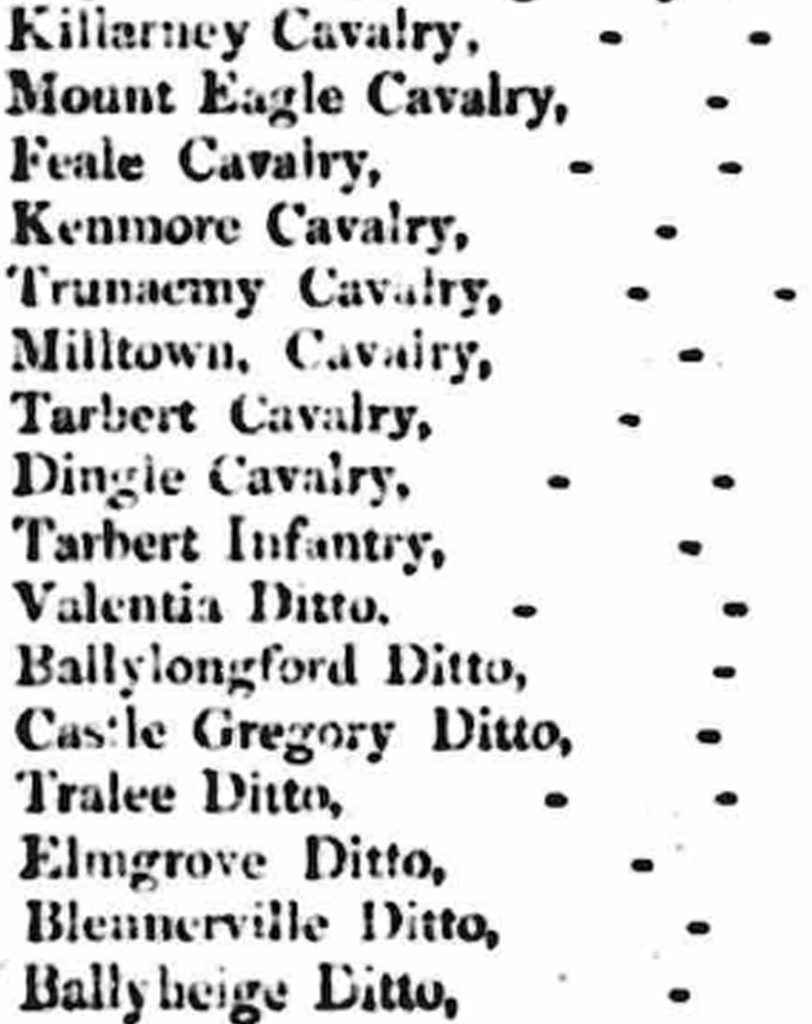
A map of the town of Castleisland dated circa 1870 shows Rack Lane, a name not recognised in the locality today. It may take its history from this period.10
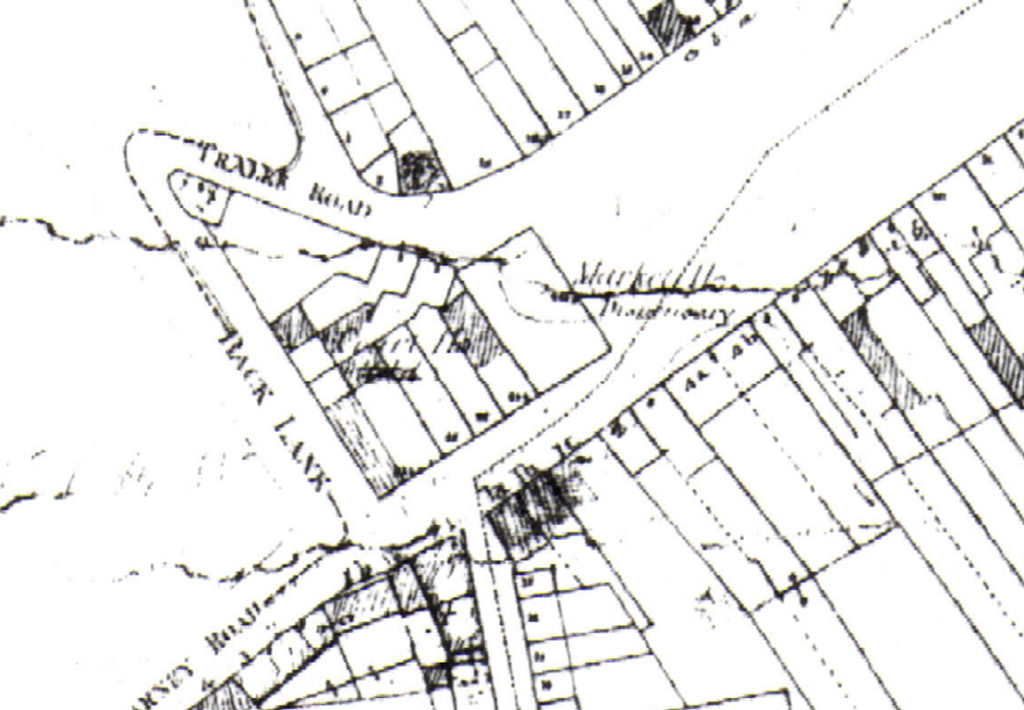
Donovan in his recollections left a more pleasant tale of 1798:
A few score of Islanders now living remember a curious little house on the brow of the Main St near where the fine building housing the Provincial Bank stands … in the dark and fearful days of ’98, this house was occupied by the then parish priest Canon Sugrue. He was one time a Chaplain in the French army and was a highly cultured gentleman … A group of drunken Yeomen once insulted the Canon and he laid a complaint before the officers. The officers finding that the Canon served as a chaplain in the European wars made amends for the boorishness of their men and afterwards often invited him to their table.11
Two hundred years on from 1798, a memorial to Daniel Buaic O’Grady was unveiled at Kilmurry cemetery, Cordal.12

______________
1 IE MOD/60/60.1/60.1.1. Extract from chart containing O'Donohoe's notes on the period of 1798 compiled from a number of published and other sources (numbered 1-11) in which he appears to have been trying to properly identify the men executed in Castleisland in 1798. 2 IE MOD/A21. Photograph from a copy made available to the collection by Breda Brooks. 'Mr de Valera opened his North Kerry by-election tour with a meeting at Castleisland last night. He was given a tumultuous reception in a town that was ringed with bonfires. On arrival at the outskirts he was met by a cheering crowd. He was escorted to the platform in a procession headed by the Cullen pipers' band, and including a cavalcade of horsemen, torch-bearers and a contingent of IRA veterans under Mr J B Mahoney' (Irish Press, 18 February 1956). A second image of Garda Matt O'Donohoe held in IE MOD/A22/1 taken at the Crown Hotel Castleisland in the early 1950s on the occasion of the retirement party of Sergeant Troy. 3 IE MOD/80/80.1 Notes derived from a number of published sources with some support material, including an article by Pádraig Ó Snodaigh, 'Notes on the Volunteers, Militia, Yeomanry and Fencibles of Kerry' (1971). 4 Hull Advertiser and Exchange Gazette, 8 September 1798. Captain Meredith was William, born in 1772, of the Merediths of Dicksgrove; for genealogy see IE MOD/55/55.1/55.1.202. 5 ibid. 6 Letter to the Editor, 'An Island of slanderers', Kerryman, 2 March 1929. 7 Freeman's Journal, 11 November 1800. IE MOD/60/60.1/60.1.1 contains a compilation of notes from various published sources towards identification of those executed. 8 London Courier, 9 July 1801. IE MOD/60/60.1/60.1.1 contains a compilation of notes from various published sources towards identification of those executed. 9 IE MOD/60/60.1/60.1.3. The account, published in 1856, describes how 'Wexford was blazing and Ireland was boiling' and alluded to the role played by Timothy Nolan (Teige Lahun) who was 'steeped in the dangerous politics of Lord Edward'. Nolan desired 'to be armed and to lead armed men if necessary these stirring times'. Includes a song by Buck Grady, Ma craogh agus ma skeeli nohr i vee shahn buig translated into English (Woe, woe was the day when John was young!/With the spring in his foot and with fire on his tongue!) and Latin. A copy of Discreet and Steady Men: Kerry's role in 1798 (1999) by Padraig O Conchubhair is held in IE MOD/A15. 10 IE MOD/32/32.1/32.1.1. Rack Lane, located near the old court house (in ruin in the 1840s) which stood at the rear of the Market House. 11 Old Times in Castleisland: Rambling Reminiscences, Part 2, The Kerryman, 28 March 1925. 12 Memorial unveiled on 27 December 1998: 'The simple ceremony was attended by 25 people, most of them from the locality. A plaque was unveiled to the memory of Domhnall 'Buaic' O'Gráda, the leader of the United Irishmen' (The Kerryman, 1 January 1999). See also Kerryman, 9 September 2004: 'It would appear that the Yeomen were awaiting the return of a patrol and that the small band under the command of Donal O'Grady gained entry'. Both articles by John Reidy. Grady's place of rest remains the subject of scholarly debate.


